15 E-Commerce Growth Hacks You Should Try
Summer Nguyen | 07-17-2023
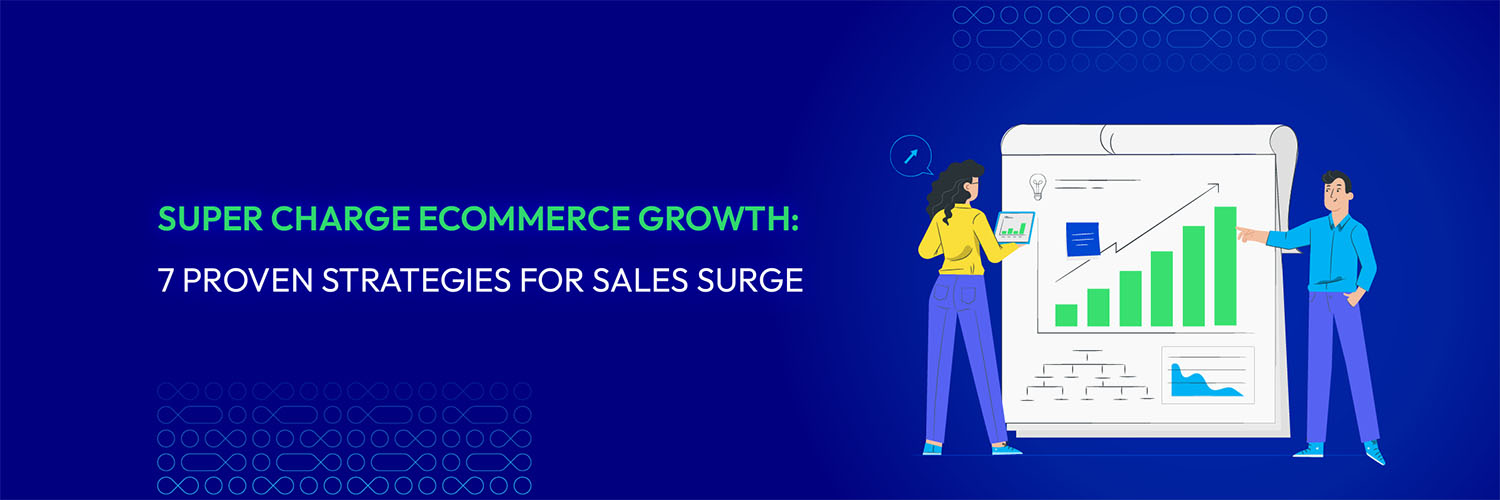
Looking to supercharge your business? Get ready for an incredible breakthrough with 15 proven e-commerce growth hacks. From improving user experience to personalizing customer interactions, each strategy brings a crucial element to boost your e-commerce business.
Prepare to start your journey and witness an astonishing explosion in your sales figures. Don’t miss out on the opportunity to amplify your e-commerce growth. Let’s explore these strategies and experience the remarkable transformation in your business!
What is an eCommerce Growth Hack?
Growth hacking, a branch of marketing, focuses on discovering the most efficient, inventive, and cost-effective methods to rapidly expand an e-commerce business. It grows by devising and executing strategies, tests, campaigns, and programs that drive online sales.
In essence, eCommerce growth hacks are techniques that expedite the growth of an eCommerce business by enhancing its conversion rate and sales. These hacks may involve optimizing campaigns for potential customers, implementing strategies to optimize conversion rates, and more. We will delve into the specifics of each eCommerce growth hack in the following sections, so keep reading until the end.
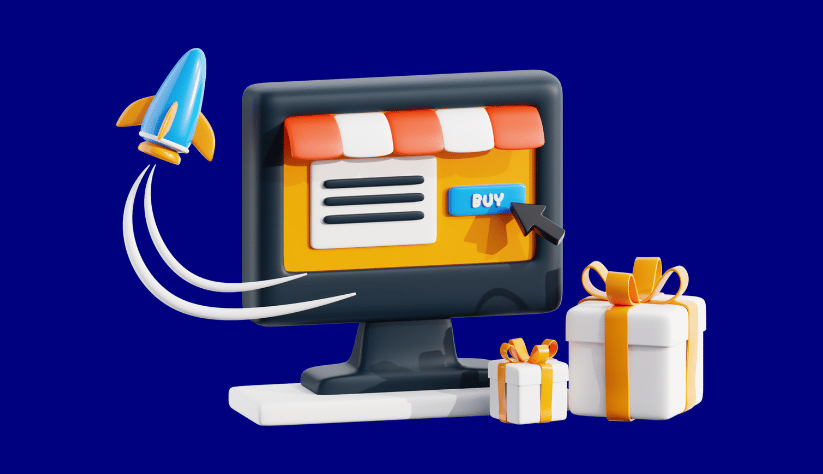
15 Effective Ecommerce Growth Hacks to Follow
To achieve effective e-commerce growth, businesses should follow several essential growth hacks. Let’s dive into each of these hacks and explore their significance:
Identify your issues
No eCommerce growth hacks strategy will be effective if you don’t know the real problem in your business. So, it is important to start your list of growth hack strategies by identifying the problem you are facing. To do that, you should:
- Analyze your data: Start by analyzing your business’s data to identify any patterns or trends that may indicate areas of improvement. Look at metrics such as conversion rates, bounce rates, average order value, customer retention rates, and customer feedback. This analysis will help you pinpoint specific issues that need to be addressed.
- Conduct customer research: Understanding your customers’ perspectives will help you identify areas where your business may be falling short and where improvements can be made. So, you can gain insights into your customers’ needs, preferences, and pain points through surveys, interviews, and social media listening.
- Identify conversion bottlenecks: Review your customer journey and identify any bottlenecks or friction points that may be hindering conversions. This could include issues with website usability, checkout process, product descriptions, or customer support. Addressing these bottlenecks can lead to improved conversion rates.
Segment your audience
Each product is unique, and individuals will have varying reactions to them. To achieve optimal e-commerce growth, it is crucial to employ targeting, segmentation, and personalization as effective strategies
There are various ways to segment your audience, including:
- Demographic segmentation: Dividing your audience based on demographic factors such as age, gender, location, income, and occupation.
- Psychographic segmentation: Segmenting based on psychological factors such as interests, values, attitudes, and lifestyle.
- Behavioral segmentation: Segmenting based on customer behaviors such as purchase history, browsing behavior, engagement with marketing campaigns, and loyalty.
- Contextual segmentation: Segmenting is based on the context in which customers interact with your brand, such as the device they use, the time of day, or the channel they prefer.

It is notable for utilizing all available data sources to segment your audience effectively. This includes
- Website analytics: Track user behavior on your website to understand browsing patterns and purchase history.
- CRM data: Gather customer information through sign-ups, purchases, and interactions.
- Social media data: Analyze follower demographics and engagement to understand interests and preferences.
- Email marketing software: Track email engagement and segment based on opens, clicks, and purchases.
Optimizing Website
One of the foundational e-commerce growth hacks is optimizing thewebsite. Here’re some key points you need to consider:
- Prioritize mobile design: More than half of online shopping happens on mobile devices. Make sure your website is responsive and looks great on all screen sizes.
- Creating a user-friendly interface for an e-commerce website is crucial for providing a positive customer experience and increasing sales. Here are some tips to make your e-commerce website interface more user-friendly:
- Keep the layout clean and uncluttered. Avoid excessive graphics, animations, and text. This can overwhelm users and make finding what they’re looking for difficult.
- Choose a clear and easy-to-read font. Sans-serif fonts like Arial or Helvetica are good choices.
- Implement clear and compelling call to action (CTAs) throughout your website to guide visitors toward making a purchase.
- Make it easy for users to find the products they’re looking for, even if they don’t know exactly what they want.
- Include a prominent search bar so users can quickly find specific products.
- Use breadcrumbs to show users where they are on the website and how to return to previous pages.
- Make the checkout process as simple and streamlined as possible. There should be no more than three steps involved.
Harnessing the Power of SEO
For online businesess, search engine optimization (SEO) is a potential e-commercegrowth hack.
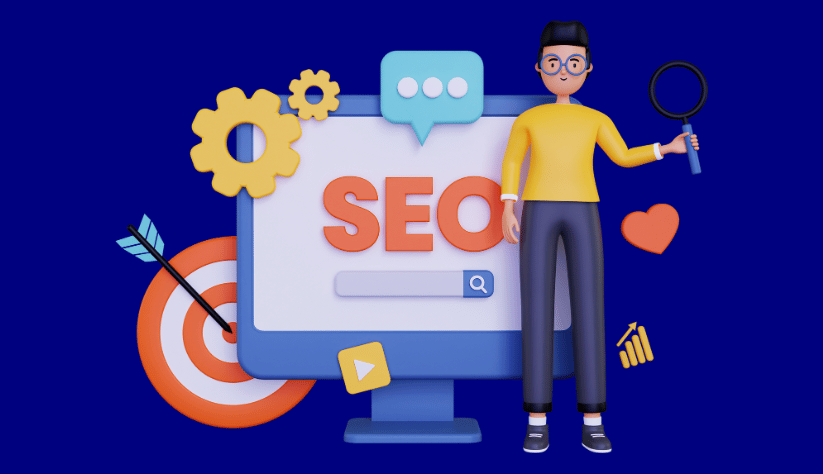
Below are some aspects related to SEO Optimization that you need to pay attention to:
- Keyword research:
- Conduct in-depth keyword research to identify relevant keywords.
- Use targeted keywords by your audience in their searches.
- Strategically incorporate keywords into website content (Product descriptions, meta tags, headings, URLs, etc.)
- Website Structure & Navigation:
- Optimize website structure and navigation for efficient crawling and indexing.
- Implement clear and user-friendly navigation for improved user experience.
- Utilize logical site structure and hierarchy.
- Backlink building:
- Build backlinks from reputable websites to improve website authority.
- Increase website visibility in search results.
- Product page optimization:
- Optimize product pages with unique and compelling titles, descriptions, and images.
- Entice both search engines and potential customers.
- Performance monitoring:
- Regularly monitor SEO performance and track keyword rankings.
- Make data-driven optimizations to improve website visibility.
- Drive organic traffic and increase website success.
From there, you can increase your e-commerce website’s visibility, attract relevant traffic, and boost sales and revenue.
Generate valuable content
Along with SEO, valuable and useful content is one of the key e-commerce growth hacks that you definitely cannot ignore. It attracts organic traffic, builds trust and loyalty, and ultimately drives conversions.
Here are some strategies to create valuable content as an eCommerce growth hack:
- Focus on quality, not quantity: Strive to create informative, insightful, and engaging content that solves your audience’s problems and adds value to their lives.
- Diversify your content format: Experiment with different content formats to reach a wider audience and cater to different learning styles. Blog posts, articles, infographics, videos, podcasts, webinars, and social media posts are all effective options.
- Repurpose your content: Don’t let valuable content gather dust. Repurpose it into different formats to reach new audiences and expand its reach. Turn blog posts into videos, infographics into social media posts, etc.
- Leverage user-generated content (UGC): UGC is a powerful tool for building trust and authenticity. Encourage customers to create content featuring your products, such as reviews, photos, and videos. Share UGC on your website, social media, and marketing materials.
Leveraging Social Media
Leveraging social media is one of the a powerful ecommerce growth hacks for your business. To utilize social media, you can start by:
- Target your platforms: Identify the right social media channels where your target audience and industry are active.
- Craft compelling profiles: Create engaging and visually appealing profiles that reflect your brand identity and values.
- Share captivating content: Regularly share compelling content like product images, videos, blog posts, and customer testimonials to attract and engage your audience.
- Leverage advertising: Utilize social media advertising options to reach a wider audience and target specific demographics or interests.
- Encourage user-generated content: Run contests, giveaways, or campaigns to involve your audience and encourage them to create content about your brand.
- Actively engage: Respond promptly to comments, emails, and mentions to build relationships and demonstrate responsiveness.
With these actions, you can build brand awareness, foster customer engagement, drive traffic to your e-commerce store, and ultimately boost sales and revenue.

Utilizing Email Marketing
Email marketing can be a powerful growth hack strategy for e-commerce businesses. It lets you directly reach your target audience, build relationships, and drive conversions. Here are some tips on utilizing email marketing as an e-commerce growth hack strategy:
- Build an email list: Offer incentives such as discounts, exclusive content, or freebies in exchange for email sign-ups. You can use pop-ups on your website, landing pages, or lead magnets to capture email addresses.
- Segment your email list: Segment your list based on demographics, purchase history, browsing behavior, or engagement level. This will help you tailor your messages and offers to specific customer segments.
- Create engaging email content: Use attention-grabbing subject lines, personalized greetings, and relevant content. Include visually appealing images, clear call-to-action buttons, and compelling offers to encourage click-throughs and conversions.
- Automate email campaigns: These can include welcome emails, abandoned cart reminders, post-purchase follow-ups, and personalized recommendations based on customer behavior. Automation saves time and ensures timely and relevant communication with your subscribers.
- Optimize for mobile: Ensure your emails are mobile-responsive, with clear and easy-to-click buttons and images that load quickly. You should test your emails on different devices and email clients to ensure a seamless experience for your subscribers.
Offer multiple payment choices
Using multiple payment choices as an eCommerce growth hack can be an effective strategy to attract and retain customers. By offering multiple payment options, you can cater to different user preferences and increase the likelihood of completing a purchase.
You can include widely used payment methods like credit cards, debit cards, and digital wallets like PayPal, Apple Pay, or Google Wallet. Customers commonly prefer these options and can help increase conversion rates.
Cross-sell and upsell
Cross-selling and upselling are other effective e-commerce growth hacks. Let’s go into each of them in detail.
Cross-selling
Cross-selling suggests related or complementary products to customers based on their current purchase or browsing history. It aims to increase the average order value by offering additional items that customers may find useful or interesting. Here are some tips for cross-selling as an e-commerce growth hack:
- Suggest related products: You can display products on product pages or during checkout to encourage customers to add more items to their cart. For example, if a customer purchases a camera, you can suggest accessories like lenses, tripods, or memory cards.
- Bundle products: Create product bundles that include multiple items at a discounted price. Bundling can entice customers to purchase more items together, increasing the overall order value. For example, you can offer a bundle of skincare products at a lower price than buying each item individually.
- Offer product add-ons: You should offer customers add-on options that enhance their purchase. For instance, if a customer buys a laptop, you can offer additional software or a laptop bag as an add-on.
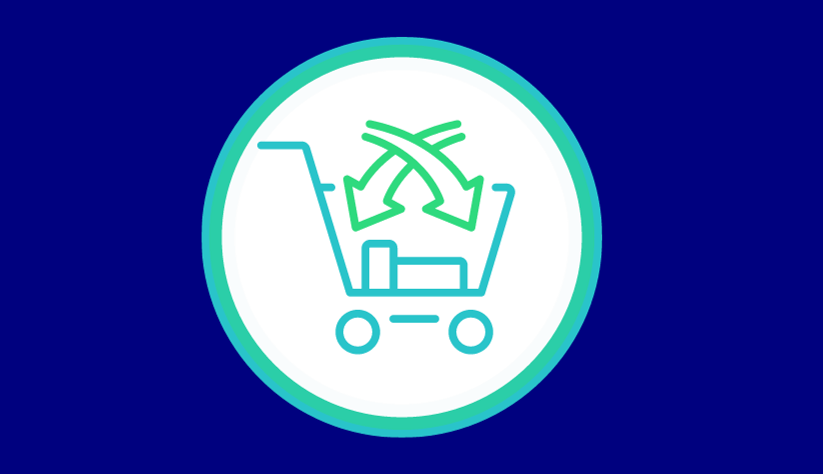
Upselling
Upselling involves encouraging customers to upgrade to a higher-priced or premium version of a product they are considering or have already added to their cart. The goal is to increase the average order value by convincing customers to spend more on a better or more feature-rich option. Here are some tips for upselling as an e-commerce growth hack:
- Highlight value and benefits: Clearly communicate the added value and benefits of the higher-priced option. Explain how it can better meet the customer’s needs or provide a superior experience.
- Offer limited-time discounts: Provide time-limited discounts or promotions for the upgraded version to create a sense of urgency and incentivize customers to upgrade.
- Follow the 25% rule: Avoid upselling products that are more than 25% higher in price than the original product. This helps prevent overwhelming customers with a significant price increase and ensures a balance between increased revenue and customer satisfaction
Encourage and highlight customer reviews
Customer reviews are a powerful tool for building trust, boosting conversion rates, and driving sales. In the competitive world of e-commerce, encouraging and highlighting positive reviews can be a major growth hack. Here are some strategies you can use:
- Reach out to customers and encourage reviews: You need to actively engage with your customers and ask them to write reviews about their experience with your products or services. You can send follow-up emails after a purchase, provide incentives such as discounts or loyalty points, or create brand-specific hashtags to encourage customers to share their feedback.
- Make it easy for customers to leave reviews: Simplify the process by providing clear instructions and user-friendly interfaces. Consider using third-party review platforms or integrating review features directly into your website. Also, it is important to streamline the review submission process to minimize friction and increase the likelihood of customers leaving reviews.
- Respond to customer reviews: You should show that you value customer feedback by responding to positive and negative reviews. Engaging with customers demonstrates your commitment to customer satisfaction and can encourage more customers to leave reviews
Include a section of recommended products
Including a section of recommended products on your website can be a great e-commerce growth hack to increase customer engagement and drive sales. By providing personalized recommendations based on customer behavior and preferences, you can
- Help customers discover new products.
- Increase their likelihood of making a purchase.
Here are some steps to implement this growth hack:
- Collect and analyze customer data: To provide accurate and relevant product recommendations, you must collect and analyze customer data. This can include browsing history, purchase history, demographic information, and customer preferences.
- Use behavioral data: Utilize behavioral data from various sources to link up similar potential customers and provide accurate recommendations. This can include analyzing customer interactions on your website, tracking their browsing patterns, and using algorithms to identify patterns and similarities among customers.
- Display recommended products: Create a dedicated section on your website to showcase recommended products. This section can be placed on the homepage, category pages, or product pages. The key is to make it easily accessible and visible to customers. You can use eye-catching visuals, such as product images and videos, to attract attention and engage customers.
Enhance customer service
To enhance customer service as an e-commerce growth hack, you can implement various strategies and tactics. Here are some effective approaches:
- Optimize customer support channels: Ensure your customer support channels, such as email, phone, and social media, are easily accessible and responsive. Promptly address customer inquiries and provide timely resolutions to issues.
- Implement live chat and chatbots: You should Utilize live chat and chatbot technologies to provide instant customer support and assistance. These tools can handle common queries, provide product recommendations, and offer personalized assistance.
- Offer proactive support: Monitor customer behavior and proactively reach out to customers needing assistance. For example, if a customer abandons their shopping cart, send them a personalized email offering assistance or a discount to encourage them to complete their purchase.
- Provide fast and efficient shipping: Optimize your shipping processes to ensure fast and reliable delivery. Offering expedited shipping options and transparent tracking can enhance the customer experience and increase satisfaction.
- Offer hassle-free returns and exchanges: You need to simplify your return and exchange processes to make it easy for customers to return or exchange products. Clear return policies and a seamless process can build trust and improve customer satisfaction.
Running paid ads

Running paid ads is a common e-commerce growth hack used by many businesses to increase their conversion rates and sales. Paid advertising allows businesses to reach a wider audience and target specific customer segments.
Here are some steps to run paid ads as an e-commerce growth hack:
- Define your goals: Before running paid ads, it’s important to define your goals. Are you looking to increase brand awareness, drive traffic to your website, or generate sales? Clearly defining your goals will help you create effective ad campaigns.
- Choose the right platform: There are various advertising platforms available, such as Facebook Ads, Google Ads, and Pinterest Ads. Choose the platform that aligns with your target audience and business objectives. For example, Facebook Ads are popular for e-commerce businesses due to their large user base and targeting options.
- Create compelling ad creatives: It is important to design eye-catching and engaging ad creatives that resonate with your target audience. Use high-quality images or videos, compelling copy, and clear calls to action to encourage users to click on your ads.
- Target the right audience: Define your target audience based on demographics, interests, and behaviors. You should narrow down your audience to reach the most relevant potential customers. This will help you maximize the effectiveness of your ads and minimize wasted ad spend.
- Set a budget: Determine your advertising budget based on your business goals and financial capabilities. Start with a smaller budget and gradually increase it as you see positive results.
- Monitor and optimize: Regularly monitor the performance of your ads and make necessary adjustments. Analyze key metrics such as click-through rates, conversion rates, and return on ad spend. Also, you should optimize your ads by testing different variations, targeting options, and ad placements to improve their performance.
Expanding Reach through Influencer Marketing
Expanding reach through influencer marketing is a valuable strategy for driving e-commerce growth. Here are some useful tips to do that:
- Identify influential individuals or popular bloggers in your industry who have a significant following and align with your brand values.
- Collaborate with these influencers to promote your products or services to their engaged audience.
- Encourage influencers to create engaging content featuring your products, such as reviews, tutorials, or unboxing videos, to showcase their firsthand experiences.
- Offer exclusive discounts or affiliate programs to incentivize influencers to promote your brand.
- Track and measure the impact of influencer campaigns by keeping an eye on statistics like reach, engagement, and conversions.
- Consider micro-influencers who have a smaller but highly targeted following, as they can have a more personal connection with their audience.
Analyzing and Monitoring E-commerce Growth
Analyzing and monitoring e-commerce growth is crucial for driving continuous improvement and achieving sustained success. By analyzing and monitoring e-commerce growth, you can:
- Adapt to changing market dynamics.
- Identify expansion opportunities.
- Make data-backed decisions to drive sustainable growth and maximize the potential of your e-commerce business.
To analyze and monitor your eCommerce progress, you can apply the following practical tips:
- Establish key performance indicators (KPIs) for your company, such as conversion rate, average order value, customer acquisition cost, and customer lifetime value. Utilize analytics tools to track these metrics and gain valuable insights into preferences, customer behavior, and purchasing patterns.
- Regularly analyze the data to identify trends, strengths, and areas for improvement. This data-driven approach enables you to make informed decisions and optimize your e-commerce strategies.
- Monitor website traffic sources to understand which channels are driving the most valuable traffic. Conduct A/B testing to test different website elements, marketing campaigns, or pricing strategies to determine the most effective approaches.
8 Mistakes to Avoid in e-Commerce
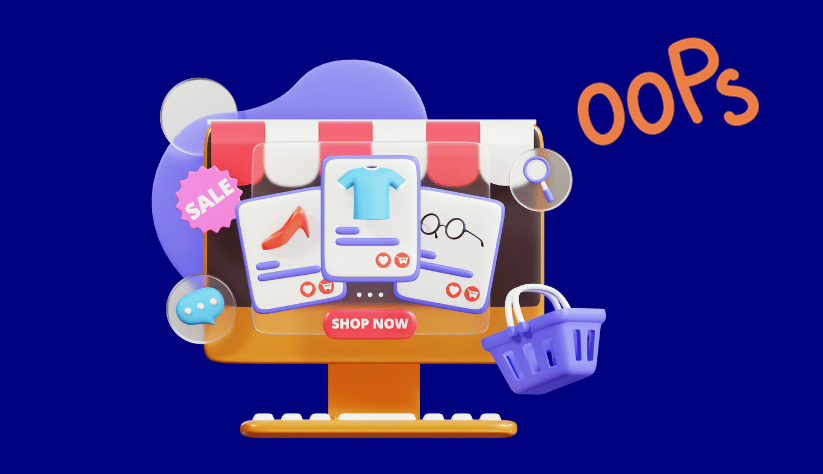
In e-commerce, there are certain pitfalls and mistakes that should be avoided to ensure the smooth operation and success of your online business. Here are some things to avoid in e-commerce:
- Poor website design: A poorly designed website with a confusing layout, slow loading speed, and difficult navigation can drive away potential customers. Spend money on developing a user-friendly, aesthetically pleasing website that improves the entire purchasing experience.
- Inadequate product descriptions and images: Insufficient or inaccurate product descriptions, along with low-quality images, can lead to customer dissatisfaction and higher return rates. Provide detailed information about your products and use high-resolution images to showcase them effectively.
- Lack of trust signals: Building customer trust is crucial in e-commerce. Avoid neglecting trust signals such as customer reviews, ratings, testimonials, and security badges. These elements help establish credibility and foster trust in your brand.
-
Complex checkout process: A lengthy or complicated checkout process can result in cart abandonment. Streamline the checkout process by minimizing the number of steps required and offering guest checkout options. Customers can easily and swiftly finish their transactions as a result.
- Insufficient customer support: Failing to provide prompt and effective customer support can harm your e-commerce business. Respond to customer inquiries, concerns, and complaints in a timely and professional manner through various channels, such as email, live chat, or phone.
- Ignoring mobile optimization: With more and more mobile devices being used for online shopping, neglecting mobile optimization can cost you valuable customers. Ensure your website is fully responsive and optimized for mobile devices to deliver a seamless browsing and shopping experience.
- Neglecting analytics and data: Avoid overlooking the importance of data analysis in e-commerce. Utilize analytics tools to monitor key metrics, track customer behavior, and gain insights into your business performance. Regularly review and analyze the data to make informed decisions and optimize your strategies.
- Lack of marketing strategy: A solid marketing strategy is essential to driving traffic and attracting customers to your e-commerce store. Avoid neglecting marketing efforts such as search engine optimization (SEO), social media, content, and paid advertising. Develop a comprehensive marketing plan to increase your brand visibility and reach.
Conclusion
To identify the factors contributing to business growth accurately, it is important to make one change at a time. By incorporating e-commerce growth hacks into your overall marketing strategy, you can enhance brand awareness and drive sales for your online store





![Top 20+ Must-have Shopify Apps for 2025 [Free & Paid] - Mageplaza](https://cdn2.mageplaza.com/media/blog/must-have-shopify-apps/top-must-have-shopify-apps.png)
![[2025 Updates] Top 10+ Upsell Apps for Shopify - Mageplaza](https://cdn2.mageplaza.com/media/blog/best-upsell-shopify-app/cover.png)